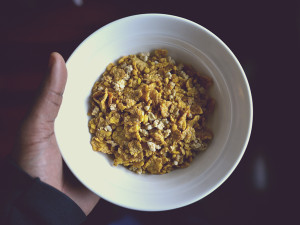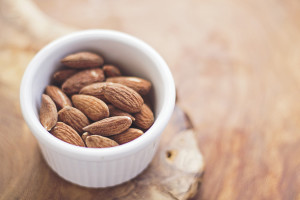Some athletes are still on the “see-food diet”. They see food and they eat it. Others are a bit more mindful about how they nourish their bodies; they put thought into selecting high-quality foods that invest in good health, quick healing, and top performance. They commonly report they have taken their diets to the next level. For some disciplined and dedicated athletes, the next level is a perfect diet with no sugar, no processed foods, no desserts, and no “fun foods.”
While aspiring to eat quality foods is certainly a step in the right direction, eating too healthfully can sometimes create problems if the food policy becomes a bit too zealous. Is birthday cake really a bad-for-you food? (I don’t think so.) Is gorging on vegetables really best for your body? (Not if your hands acquire an orange tinge from having eaten too many carrots, or if you experience recurrent diarrhea due to an excessively high-fiber diet.)
 Perhaps a better goal than a perfect diet is an excellent diet. An excellent diet might be more balanced, enjoyable, and sustainable. Even birthday cake with refined sugar and saturated fat can fit into an excellent diet. That is, the 2015 Dietary Guidelines allow for the inclusion of small amounts of so-called “imperfect” foods in your food plan:
Perhaps a better goal than a perfect diet is an excellent diet. An excellent diet might be more balanced, enjoyable, and sustainable. Even birthday cake with refined sugar and saturated fat can fit into an excellent diet. That is, the 2015 Dietary Guidelines allow for the inclusion of small amounts of so-called “imperfect” foods in your food plan:
• 10% of calories can come from refined sugar. That’s about 250 to 350 calories (60 to 90 grams) of sugar (carbohydrate) for most female and male athletes, respectively. This sugar fuels your muscles. Sports drinks and gels count as refined sugar.)
• 10% of calories can come from saturated fat that clogs arteries and is associated with heart disease. For an athlete who requires about 2,500 to 3,500 calories a day, consuming 250 to 350 calories (about 30 to 40 grams) of saturated fat per day, if desired, can fit within the saturated fat budget. This means, from time to time, you can enjoy without guilt some “bad foods” such as bacon and chips. One slice of bacon has about 1 gram saturated fat; a small bag of potato chips, about 3 grams.
Certainly there are healthier foods to eat than bacon and chips, but you want to look at your whole day’s food intake—not just a single item—to determine the overall quality of your sports diet. If 85% to 95% of your food choices are high quality, a little bacon or a few chips will not ruin your health forever.
Some athletes deal with “unhealthy” foods by setting aside one day a week to be their cheat day. (Think Faturday or Football Sunday.) This well-intentioned plan can easily backfire. Most people don’t over-eat/spurge until they have first been denied or deprived of a favorite food. Hence, when the Perfect Diet starts on Monday, people can do a heck of a lot of “last chance” eating the days before starting their restrictive food plan…
Rather than a Sunday splurge, let’s say on bacon, you might want to enjoy just a few slices of bacon throughout the week. This can curb cravings and dissipate the urge to splurge on Sundays. There can be a “diet portion” of any food.
Going to the Next Level
For athletes who want to take their diets to the next level with a sustainable plan, I offer these suggestions:
• Evenly distribute your calories throughout the day. Most active women need about 2.400-2,800 calories a day; active men may need 2,800-3,600 calories a day. This number varies according to how much you weigh, how fidgety you are, and how much you exercise. That’s why meeting with a professional sports dietitian can help you determine a reliable estimate. To find a local sports dietitian, use the referral network at www.SCANdpg.org.
• Most “bad” food decisions happen at night, after your body has been underfueled during the day. If you are “starving” before dinner, add a second lunch to curb your evening (over)eating. You will easily save your self from a lot of junk food at night. Trust me.
• If your body requires 2,400 to 2,800 calories per day, this divides into 4 food buckets with ~600-700 calories every four hours. For example: 7:00 a.m., breakfast; 11:00, early lunch; 3:00 p.m., later lunch; and 7:00, dinner. (Adjust the times to suit your schedule and divide the calories, if desired, into smaller snacks within that 4-hour window.
• Your breakfast food-bucket should be the same size as your dinner bucket; this likely means you’ll be eating a smaller dinner and a bigger breakfast. If you train in the morning, you may want to eat part of your breakfast calories before you exercise and the rest afterwards. Include in each food bucket at least three of these four types of foods:
1. Grain-based foods (about 150-250 calories/bucket), to fuel your muscles. Easy whole grains: whole wheat bread, oatmeal, baked corn chips
2.  Protein-based foods (about 250 calories/bucket), to build and repair your muscles. Easy ready-made options include rotisserie chicken, deli turkey, hummus, tuna pouches, tofu, hard-boiled eggs, nuts.
Protein-based foods (about 250 calories/bucket), to build and repair your muscles. Easy ready-made options include rotisserie chicken, deli turkey, hummus, tuna pouches, tofu, hard-boiled eggs, nuts.
3. Fruits and veggies (about 100-200 calories/bucket) for vitamins and minerals. Choose a variety of colorful fruits: strawberries, cherries, oranges, peaches, bananas, and blueberries. Also choose colorful veggies: dark green broccoli, peppers, spinach; orange carrots, sweet potato; red tomato, etc.
4. Dairy/calcium-rich foods (about 100 calories/bucket) for bones and maintaining low blood pressure: Lowfat (soy) milk, (Greek) yogurt, cheese — but please not rice or almond milk. They are equivalent to juice with very little protein or nutritional merit.
By filling up on quality foods at breakfast, lunch #1, and Lunch #2, you will crave less “junk food” at night‑and may not even miss it. Your diet will easily rise to the next level, no sweat.
Sports nutritionist Nancy Clark, MS RD CSSD, has a private practice in the Boston-area (Newton; 617-795-1875). She teaches both fitness exercisers and competitive athletes how to eat to perform well. Her best-selling Sports Nutrition Guidebook, and food guides for marathoners, cyclists and soccer players, as well as her teaching materials, are available at nancyclarkrd.com. For online and live workshops, visit NutritionSportsExerciseCEUs.com.

